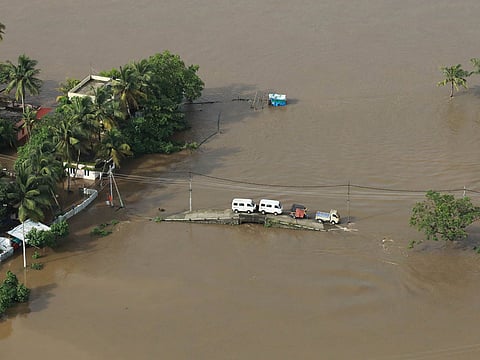Kerala suffers $2.8b damage in floods
The natural disaster could mean a loss of tourism income for an entire season

The worst floods in a century in India’s southern state of Kerala have killed 324 people, caused $2.8 billion (Dh10.28 billion) in damages and left more than 220,000 people homeless, since the start of the monsoon season in June.
Armed forces and rescue teams are trying to evacuate those stranded low-lying areas and buildings.
One of the country’s top tourist destinations, promoted for decades as ‘God’s Own Country,’ Kerala boasts of miles of beaches and palm-fringed backwaters.
It has been hit by unprecedented rain in the past few days, forcing authorities to open the flood gates at as many as 80 dams.
The facilities of Tata Consultancy Services Ltd, Asia’s largest software exporter, in Kochi and Thiruvananthapuram were not directly affected, according to a company spokeswoman.
Tourism hurt
While it’s not peak tourist period in the state, the monsoon season does attract many visitors. The Cochin International Airport has been shut until August 26 after the runway was submerged, according to airport authorities.
Train services in several parts of the state have also been suspended because of landslides and flash floods, according to a Twitter post by Southern Railway.
“Tourism is completely out of gear,” Pronab Sarkar, president of the Indian Association of Tour Operators, said by telephone. “Rescue operations for existing tourists are going on and no fresh tourists are bring sent at the moment.”
The floods will have an adverse impact until the middle of September, Sarkar said. Tourism accounts for about 10 per cent of Kerala’s gross domestic product, with the state welcoming about one million foreign tourists last year and 14.7 million local visitors.
The natural disaster could mean a loss of tourism income for an entire season while the state rebuilds itself, said Abhijit Sen, a New Delhi-based economist. “But this is also a wake-up call for India to plan better in the long run to help adapt for extreme climate change events.”
Sign up for the Daily Briefing
Get the latest news and updates straight to your inbox


